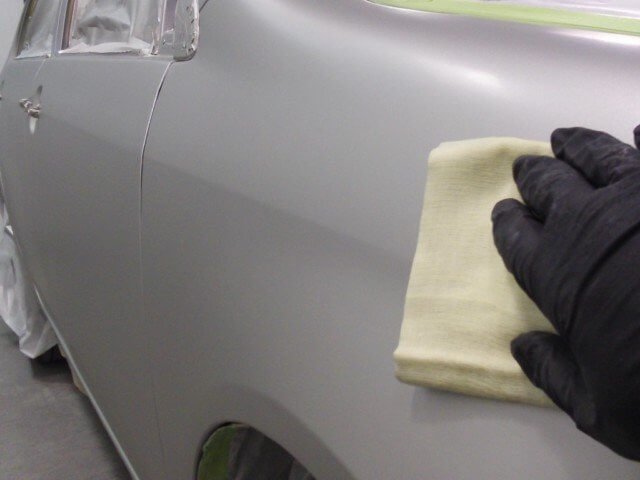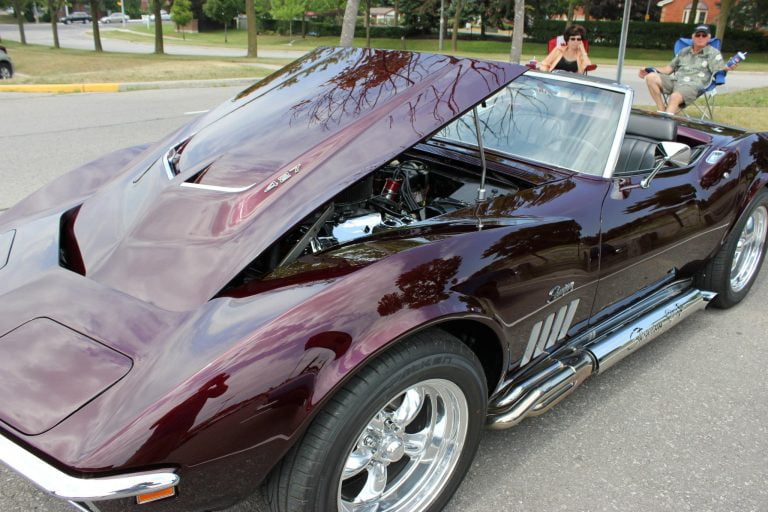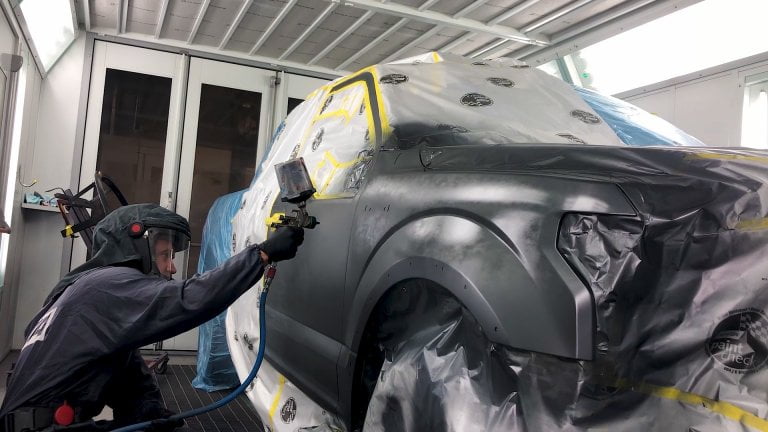Sandpaper for Auto Body Repair

As a very important part of the repair process & something you spend more of your time then anything else doing, It’s important to know what your doing and why your doing it. The purpose for sanding can be summarized for two main reasons:
To Provide Mechanical Adhesion & To Remove Surface Imperfections
Sandpaper not only comes in different grits, but also different standards. The two main papers you\’ll come across are “CAMI” & “FEPA” (or P paper). At one point CAMI used to be the standard in automotive but it has since moved to FEPA. The way CAMI paper works is by allowing multiple grits on one paper. For instance a 280 grit CAMI paper could allow for 220 grit particles as well as 280. The 220 particles would allow for a quicker cut while the 280 grit on the paper would finish it off finer.
FEPA paper has much stricter measurements and has a more consistent grit particle size. FEPA paper is designated with a P in front of the number (P280 is FEPA, 280 is CAMI). As a result you end up with different scratches using CAMI or FEPA. It is generally safe to assume when following manufacturer guidelines they are referring to FEPA paper for the most part.
There are a wide variety of sandpaper manufacturers to choose from and they all generally follow the “you get what you pay for” rule, but there are a few manufacturers out there that offer better values then other. Sandpapers differ by:
Mineral Type
Mineral Shape
Mineral Hardness
Backing
Mineral Distribution
Adhesive Used
Sand Paper Recommendations:
As already mentioned, being that FEPA is the choice of auto body repair paper that is what is referenced here.
Stripping to Bare Metal or Fiberglass: P80 to P180
Sanding Body Fillers or Putty: P180 to P320
Featheredging: P180 to P320
Backsanding: P320 to P400
Machine Sanding or Hand Sanding
| Machine sanding is an obvious time saver and offers benefits to adhesion by producing a consistent scratch pattern. The dual action (DA) sander or orbital sander is the most often used sander in auto body repair. An orbital sander will produce a quick cut but does not finish as fine as a DA sander, they are used more often with coarser sanding grits. Dual Action sanders also allow for different backing pads to allow for flexibility around rounded panels and contours. |
Hand sanding is always best done with using a sanding pad and not actually your hand. When you are hand sanding always aim to sand in a mufti-directional pattern for the best possible mechanical adhesion. Try to sand using your palm rather then your fingers to avoid possible marks that can be visible after painting.
Featheredging
Featheredging refers to creating a smooth and tapered paint edge to the next substrate. It is most often used to step down the paint edge left from grinding, but it still has a place when repairing a stone chip, scratch or want even rust. It is recommended that you sand from the outside in to avoid ripping the paint edge back which can lead to sinking later in the repair. Holding your sander flat try to obtain 1/4″ to 1/2″ in between paint layers. A well feathered area you can run your hand over and not feel the taper. Do not allow your sander to go over the body filler.
Backsanding
Backsanding refers to the sanding process in which you are preparing your area for primer. This allows for you to prime your repair and always be priming over a sanded surface. You will want to backsand about 2-3″ past your feathering. Sand the area until is has a dull look to it.
Wet vs Dry
This is personal preference. Wet sanding offers advantages such as longer lasting paper, quicker cutting & no dust but creates a bit of a mess sometimes in the process. There is no right or wrong choice, just don’t wet sand over body filler or bare metal. Adding a bit of soap to your water also help serve as a lubricant creating a longer lasting paper.
Scotch Pads
Scotch Pads come in different grits just like sandpaper. They are nylon woven pads that produce an inconsistent scratch but are still quite reliable. They can be used in some situations as an alternative to sandpaper. One big advantage is that they can penetrate into area’s such as orange peel where sandpaper may miss all together.






